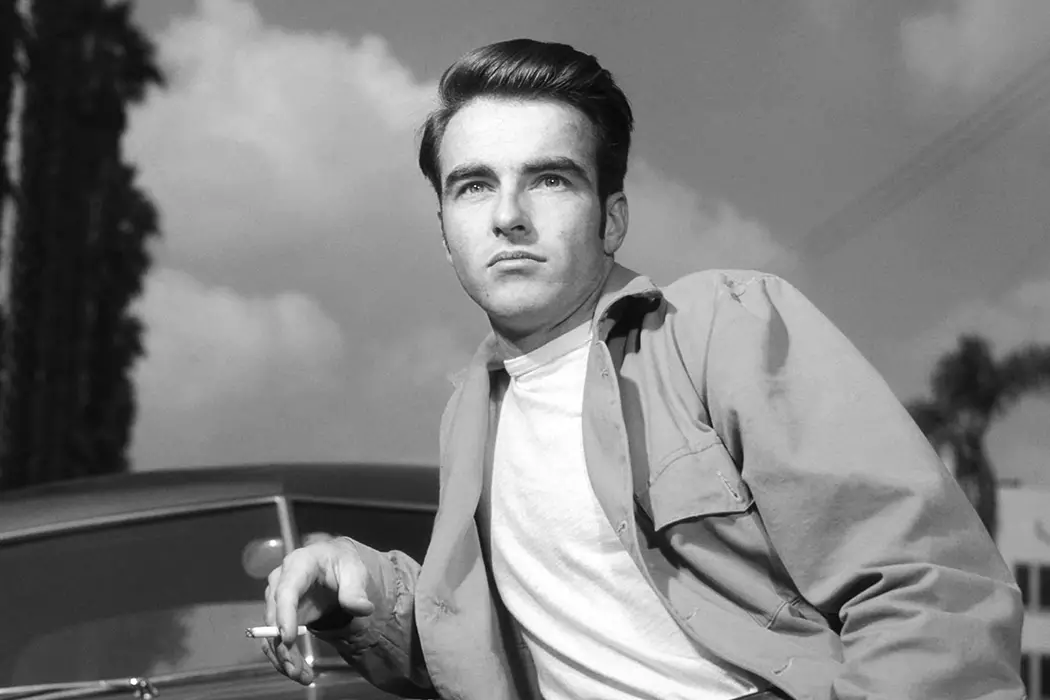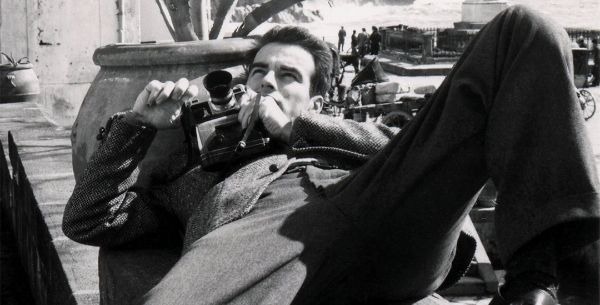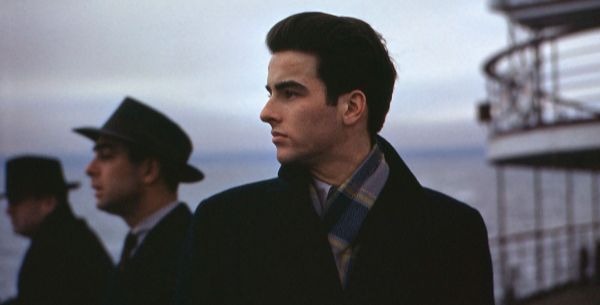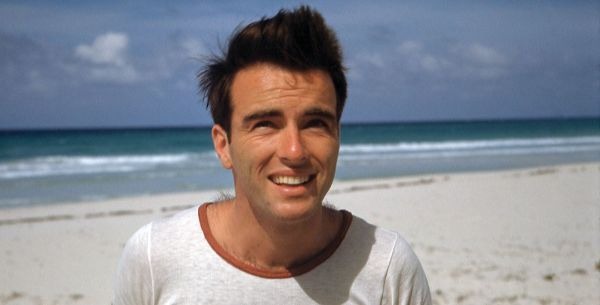MAKING MONTGOMERY CLIFT: The Jumbled Up Story Of A Legendary Actor

Tynan loves nagging all his friends to watch classic movies…
It’s committing a grievous fallacy merely casting Monty Clift as a tragic hero. History can be as fickle as it is inexplicable. Though a brilliant actor, he is often overshadowed by the lasting mythos of James Dean, and his own talents and popularity are outshined by the likes of Marlon Brando and even Paul Newman. It’s unfortunate that Clift lacks the same recognition as his peers.
Because this is not the only perceived tragedy. His personal life is clouded by all sorts of issues, namely his alcoholism, his untimely death from a heart attack at the age of 45, and undoubtedly a myriad of other questions about his private life. “Authoritative” biographers and late night news shows needlessly promote the image of the “Beautiful Loser” or “The Slowest Suicide in Hollywood.” The narrative purportedly goes that his substance abuse was brought on by his inner conflict over his own sexual identity. Half of him was so perfect and the other half of him wanted to die.
Rewriting The Tragedy
Here we have theories of his personal life obscuring his work. Because we begin to see the on-screen performances through this same lens, it allows them to bleed together. For instance, there’s the narrative I was a proponent of without even realizing it. In 1956, during the filming of Raintree Country with Liz Taylor, he got in a horrible car accident which hospitalized him for an extended period of time and required major surgery. Oftentimes, it’s called upon as a lynchpin of his career. There’s before and then there’s after.

Truthfully, the narrative is so prevalent because it’s compelling and honestly seems believable given the radical physical change in Clift‘s appearance. In some post-accident work like Judgment at Nuremberg or The Misfits, his features have noticeably changed while his nerves seem almost rattled, dare I say, infirm.
Yet in one of his most prominent contemporary interviews, Clift himself says his favorite performances were in The Young Lions and Judgment at Nuremberg (the second part a near cameo). Of course, both came after the accident. It seems he was more at home in his new skin and garnered continued acclaim, not through his handsome features but the intricacies of his performances.
Meanwhile, the documentary postulates that his downward spiral may have come in the wake of a lawsuit the maverick director John Huston filed against him following the tumultuous production of Freud: The Secret Passion. As a result, Clift did not make a movie for about four years after that, and for a man whose every waking minute was seemingly spent devoted to his craft, the detriment seems obvious.
Portrait of an Actor
Some of the finest revelations out of this project stem from the fact that it is so closely tied to the man himself through his nephew, Robert Anderson Clift, who undertook the project with filmmaker Hillary Demmon. With vast personal artifacts at their disposal, Making Montgomery Clift utilizes numerous photos Clift himself snapped on stage and off before he became a “bankable property.” There is a sense we are seeing a side of the man and his experience like we have never seen before. Speaking for myself, it’s easy to know him through the medium of film because we have clearly defined documentation which we can go back to again and again.
I won’t say the stage is transient but it cannot be captured or replicated for all posterity in the same way. That’s part of the beauty of it and also part of why Clift was such a fine actor. He was willing to devote himself fully to a craft day in and day out. And he was never in a rush to become a Hollywood star because he never conceived himself a star; he was an actor.
This led to him passing on the lead in The Adventures of Tom Sawyer as early as 1938. Clift judiciously monitored his career and gambled on his own taste in selecting roles. Never did he jump the gun or tie himself down with the standard 7-year studio contract with assigned roles from an exacting studio. He went freelance when that was almost unheard of or at the very least you needed to be in demand – someone like Cary Grant or Spencer Tracy. But Clift proved equally sought after.

This is the man who turned down a staggering amount of classics including 14 films in one year! The list of pictures he passed on includes Mrs. Miniver, The Bridge on The River Kwai, East of Eden, On The Waterfront, and Sunset Blvd. With lesser actors we assume it to be a lapse in judgment but with Clift, it’s easy to see each as a calculated decision.
This is because he was so involved in every process of the film and cared deeply about the craft and the projects that he was involved with and how he could make them the best they could possibly be. He fought to have both script and director approval in his contracts – collaboration being so crucial to his work.
An annotated script running side by side with scenes of The Search reflects just how much of an imprint he left on the final film. Simultaneously, the commitment to his craft is made tangible to us. Then, in another recorded conversation with director Stanley Kramer about Judgment at Nuremberg, we get further insight into his perceptiveness; it’s extremely thoughtful and premeditated in all facets.
Likewise, Clift talking about the Method explains that if there is a “Method” of sorts the main goal is to be a truthful actor – to deliver something that bears out some semblance of emotional realism. Anyone can call upon it without even realizing it. However, what set him apart on screen was not simply his handsome features. He was a leading man who was willing to be tender – willing to be conflicted and vulnerable right in front of us – a proving ground for a new kind of masculinity.
Muddled Nature of Biography
The promise of Making Montgomery Clift or at least our hope as a viewer is that we might gain a fuller, richer perspective of who he was as a person and an actor. We do get a few tidbits like those already laid out or the admission that he was supposedly more like a Jerry Lewis clown than any of the characterizations we always seem to see in his films. There’s a taste of complexities through photos, home movies, and recordings. However, it’s a shame we don’t get more of this type of portrait.
Collective memory and even a person’s own observations are not always the most satisfying or comprehensible when we put all the pieces together. The vast amount of material compiled by Montgomery‘s brother Brooks Clift almost proves a hindrance to the picture. There’s just too much content to make something focused and succinct. How are we supposed to streamline someone’s life anyway? We can’t.
Thus, put in this light, any attempt at a biopic on anyone’s life, much less Monty Clift‘s, seems like a foolhardy task. The eminent director Sidney Lumet devised a project in the 1970s based on Patricia Bosworth‘s biography and even that never got out of development. Maybe it’s all for the best.

A documentary produced by those who have an actual concrete connection to him seems about as close as we could possibly get to some form of definitive revelation, and yet that is an onus which we cannot completely put on the filmmaker. We must concede that most any form of biography is shaped or sculpted with personal opinions.
Each of us puts it upon ourselves to decipher someone else’s psychology, their thoughts, or feelings. We rebrand them or try and put a label on them based on our point of view. Sometimes it’s simply an act to disprove others and reckon with the past. It’s difficult to know what is loving or what is selfish – creating a dividing line between promoting his legacy and propagating our own version of his story (as tabloids or even biographers try and do).
Surely, context is everything and yet even context only gets you so far. Because who has the true authority to write the narrative of someone else’s life? If anyone, you would think it should be those closest to the said individual or at least a collective of many folks if not Monty Clift himself.
Very rarely am I enthralled with an actor’s personal life, because their work is what really affects me. A performance is something which reaches out into the public domain and is meant to be offered to all of us. Often private lives are meant to remain private, though it does become a prickly proposition with notable stars. They cannot remain anonymous for obvious reasons.
It does seem like Making Montgomery Clift gets so embroiled and encumbered by all the issues with Clift‘s legacy that it fails to focus on what Brooks Clift desired from the outset. It gets bogged down with rewriting old wrongs and dispelling myths about the man. Certainly, those are earnest endeavors but getting beyond that is the key. When the film reaches into the realm of remembering this preeminent acting talent it has its greatest successes – at least for a broader audience.
Conclusion: Making Montgomery Clift
Making Montgomery Clift reminds us he was a mortal being, fallible but also fiercely independent. No life fits into a neat little pidgeon-hole, and the same can be said of Monty Clift. It’s an assertion arrived at not because of some major epiphany within this documentary but really from surveying humanity itself.
There were certain places I hoped the documentary could have dwelled in longer and in more depth. Other segments felt like near unnecessary asides. And yet here again you have the story that I would have told opposed to someone else. We run into the same issues of crafting a narrative tailored to what we want and our own interests.
I will say that the films of Monty Clift and his performances deserve their due recognition because his stature as an actor was unprecedented. The greatest compliment to the man is that I want to revisit old favorites like Red River and A Place in The Sun while discovering some lesser known movies like The Big Lift and Wild River. Please join me in mutual appreciation of a fine actor. Hopefully, his talents are something we can all get behind. This documentary most importantly shines the limelight on a deserving star.
Are you familiar with the films of Montgomery Clift and if so, are there any of his performances which resonate with you? What about his life and legacy deserves to be more widely known?
Making Montgomery Clift received its world premiere on September 23 at the 2018 Los Angeles Film Festival.
Does content like this matter to you?
Become a Member and support film journalism. Unlock access to all of Film Inquiry`s great articles. Join a community of like-minded readers who are passionate about cinema - get access to our private members Network, give back to independent filmmakers, and more.
Tynan loves nagging all his friends to watch classic movies with him. Follow his frequent musings at Film Inquiry and on his blog 4 Star Films. Soli Deo Gloria.













